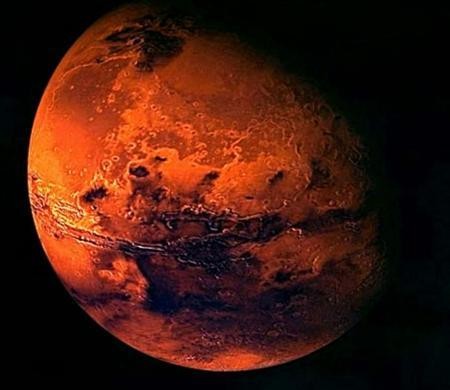Mars' closest approach to Earth since 2005 occurred at around 12 midnight in May 30 with only 46.8 million miles or 75.3 million kilometers separating the two planets. Those who missed the spectacle will need to wait another two years or until July 2018 for another shot, which NASA said will even get closer.
By calculations provided by the U.S. space agency, Mars will again close approach the Earth on July 31, 2018 and the minimum distance between the two planets will be 35.8 million miles. The Red Planet will appear bigger by then but according to Gizmodo, it will never be as big as the Moon.
"Rumors drift around the internet about Mars suddenly expanding, balloon-like into our sky, like a big red moon. Let's be very clear: That is not happening. That has not ever happened. That will never happen," the report said.
NASA said that Mars replicating the size of the Moon and coupled with the bloody Red effect could only spell disaster of biblical proportions, which anyway is unlikely to happen in millions of years. "The message is that Mars will look as big as the Moon in our night sky. If that were true, we'd be in big trouble given the gravitational pulls on Earth, Mars, and our Moon," the space agency said.
But NASA scientists are in agreement that the Mars-Earth close encounter in 2003, an event recorded as when the two planets were separated by the shortest distance observed in the last 60,000 years, will again happen in 2287. So with nearly three centuries to wait, it's best to appreciate what's being served at the moment.
NASA said Mars' close approach to Earth peaked May 30 but the Red Planet can be seen at nearly the same size until June 3 then Mars will gradually fade out until reaching its usual size to the naked eye by end of 2016. And even in the days leading to third of June or the last day that Mars appears unusually big, keen observers may notice of sizes for the planet that is closest to Earth.
Blame it on the elliptical orbits of both Earth and Mars with the gravitational pulls of nearby planets playing significant role. The strongest factor is that of the mammoth Jupiter, which NASA said "especially influences the orbit of Mars."
Nonetheless, Mars remain a nightly spectacle until the end of the week and in heavenly watching Gizmodo recommends: "To find the planet at midnight, look south and locate the bright star Antares in the constellation Scorpius. Mars will be just over the constellation's head, to the right of Antares." Or wait out for the next closer Earth-Mars encounter come July 2018.



























